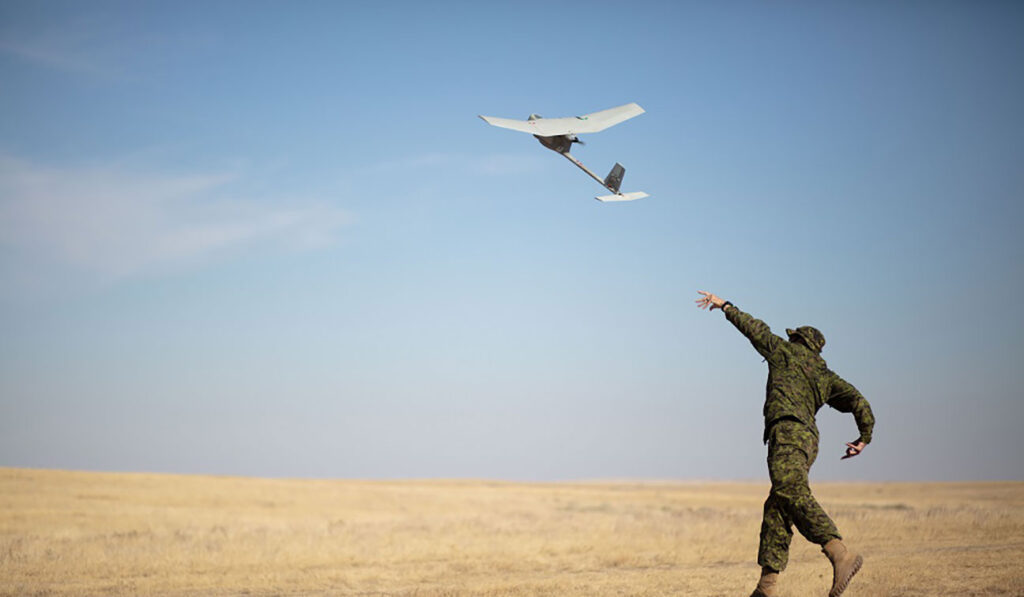Canada announced in July 2025 that it would spend $123 million to provide its troops on the front lines of a NATO mission in Latvia with protection against unmanned aerial system attacks. CANADIAN DEPARTMENT OF NATIONAL DEFENCE
Canada is investing $123 million in counter unmanned aerial system (cUAS) technology to protect its forces on the front lines of a NATO mission in Latvia. The systems are designed to destroy small drones in a wartime scenario, a threat increasingly evident in the Russia-Ukraine war. The outlay was part of the second phase of a program to buy systems that counter uncrewed aircraft, according to the Canadian government.
The July 7, 2025, announcement by the Canadian Department of National Defence emphasized the urgency of the contract with CACI Inc., a U.S. defense contractor, to supply cUAS systems mounted on a light armored tactical vehicle, as well as in-service support for the systems for up to a decade, according to a department news release. “As the international security environment changes, the Government of Canada is continually working to equip CAF [Canadian Armed Forces] personnel with the capabilities they need to protect Canada and its national interests. The (c)UAS capability will provide CAF members with improved protection against smaller hostile uncrewed aircraft systems through detection, identification, tracking, and degradation and defeat using integrated vehicles with sensors and effectors,” the release stated.
The Canadians lead the NATO Multinational Brigade-Latvia (MNB-LVA). The Canadian government stressed in the news release that it will fulfill its NATO commitment to fully deploy a combat-ready brigade of CAF members by next year. “Canada will complete the full implementation of persistently deployed Brigade capabilities to Latvia by 2026, at which point the Brigade will have up to 2,200 CAF members as part of the enhanced Forward Presence and supporting elements in Latvia,” according to a National Defence fact sheet.
The most recent Canadian acquisitions are part of a sustained pattern of upgrading the force capabilities of its largest overseas commitment. In 2024, Canada invested $20 million in air defense improvements for its share of Operation Reassurance in Latvia. Canada signed contracts with Saab Canada Inc. to buy the RBS 70 NG short-range air defense system to upgrade tactical air defense protection for Canadian troops serving in the NATO mission. The defenses protect Canadian troops against fixed-wing aircraft, helicopters and drones, according to the Canadian Defence Review.
In June 2025, the Canadian government announced it would reach NATO’s defense spending target of 2% of its gross domestic product by 2026 — five years ahead of its previously announced schedule. For the current fiscal year, Canada has pledged $6.5 billion to expand the force capabilities of the CAF. The proposed measures include better pay for CAF personnel, improved recruitment and retention, and more money for operational readiness. The funding will pay for upgrades to aircraft, armed vehicles, ammunition and logistical support, according to a Defence Department news release.
The outlays also will improve Canada’s cyber capabilities, buy new Arctic drones and sensors, and maintain the CAF’s ships and planes. Budgetary plans also cover cUAS purchases and that of other new military equipment and support ships, upgrades of over-the-horizon radar, and other early detection defenses, the release stated.

